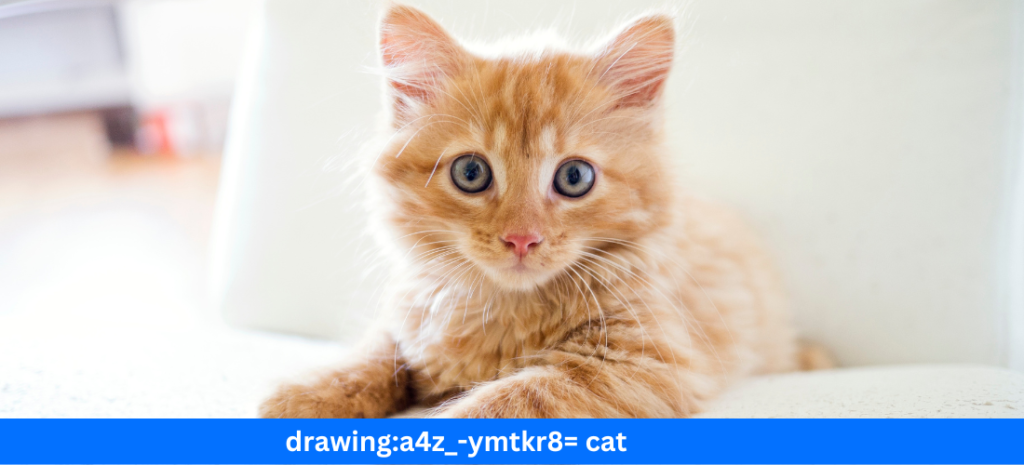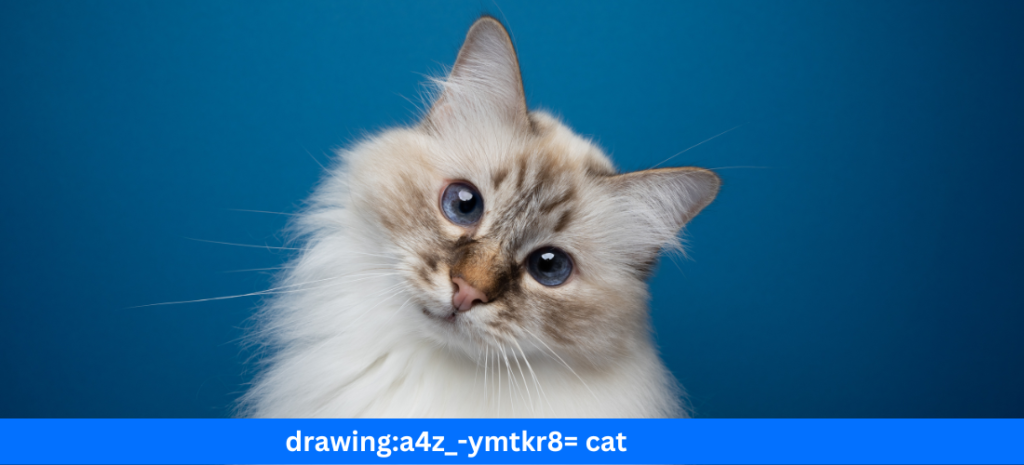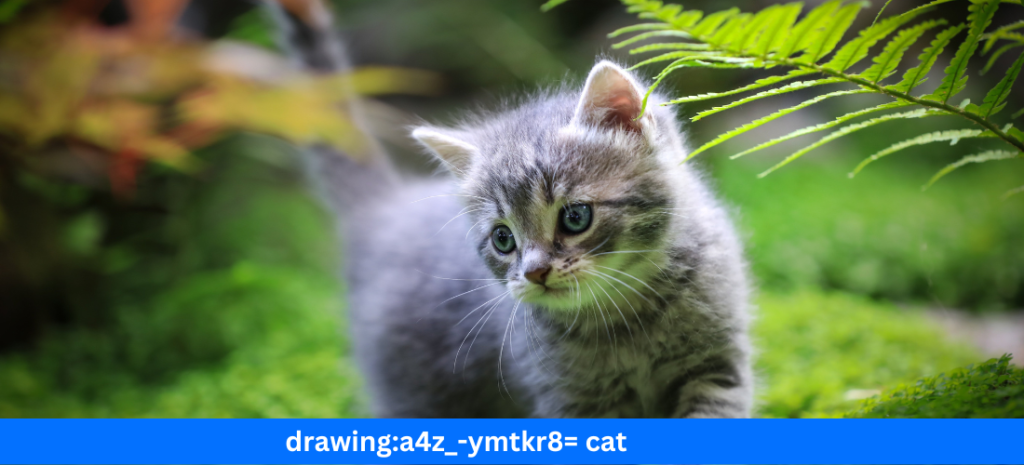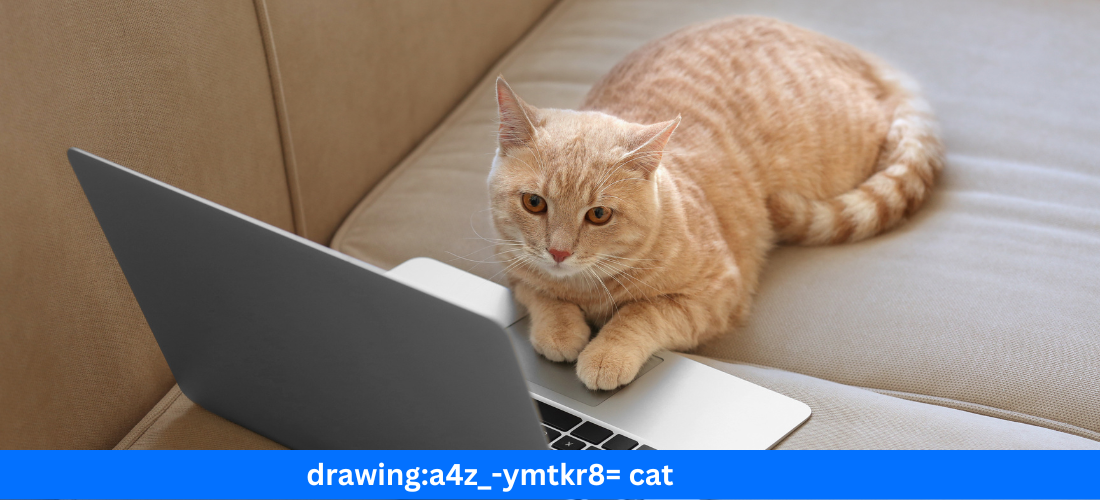Unlock Your Creativity: Drawing the A4Z_-YMTKR8= Cat Step-by-Step Have you ever looked at a blank page and felt an insatiable urge to create? If so, you’re not alone! In our fast-paced world, tapping into your creative side can be both exhilarating and therapeutic. Today, we’re diving into a unique artistic adventure that promises to unleash your inner artist—drawing the enigmatic A4Z_-YMTKR8= cat! But don’t let the quirky name fool you; this feline is brimming with personality and charm. Whether you’re a seasoned artist or just picking up a pencil for the first time, this step-by-step guide will walk you through every stroke and shade. So grab your sketchbook and prepare to bring this captivating creature to life; let’s unlock your creativity together!
Introduction to drawing:a4z_-ymtkr8= cat
Are you ready to unleash your inner artist? If you’ve ever looked at a cat and felt inspired, then drawing the A4Z_-YMTKR8= Cat is just what you need. This unique feline figure captures curiosity and charm in every stroke. Whether you’re a seasoned sketcher or just starting out, this guide will take you on an exciting journey into the world of creativity. Grab your pencils, because we’re about to dive deep into the delightful process of bringing this enchanting creature to life on paper!
Materials you will need:
- Pencils (HB, 2B, 4B)
- Eraser
- Paper (preferably A4 size)
- Reference image of the A4Z_-YMTKR8= Cat
Step 1: Observe the cat’s features
Take a good look at the reference image of the A4Z_-YMTKR8= Cat. Notice its round head, pointed ears, long whiskers, and large eyes. Pay attention to the proportions of its body and the position of its limbs. This will help you understand how to capture its essence on paper.
Step 2: Sketch a basic outline
Using a light pencil (HB or 2B), lightly sketch a basic outline of the cat’s body and head. Start with simple shapes such as circles for the head and body, and ovals for the ears. Don’t worry about getting every detail perfect at this stage.
Step 3: Add details
Now it’s time to add more details to your sketch. Use a darker pencil (4B) to define the cat’s features. Pay special attention to the shape of its eyes and ears. Add in the fur by making short, light strokes with your pencil.
Step 4: Shade in the fur
Using a combination of HB, 2B, and 4B pencils, start shading in the fur of the cat. Use lighter strokes for areas that are lighter in color and heavier strokes for darker areas. Remember to follow the direction of the fur when shading.
Step 5: Define the eyes
The eyes are one of the most important features of any animal drawing. Using a dark pencil (4B), carefully outline and shade in the cat’s eyes. Make sure to capture the reflective quality of a cat’s pupils.
Step 6: Add final touches
Take a step back and look at your drawing as a whole. Are there any areas that need more definition or shading? Use your eraser to lighten areas or add highlights where needed. Don’t be afraid to make changes until you’re happy with your drawing.
Congratulations, you’ve just created a beautiful drawing of the A4Z_-YMTKR8= Cat
Read Also: India National Cricket Team vs Afghanistan National Cricket Team Match Scorecard T20I Series Recent Scorecard
Benefits of Drawing for Creativity

Drawing is a powerful outlet for creativity. It allows your mind to wander freely while you create something unique.
Engaging in this art form enhances problem-solving skills. As you sketch, you’re constantly making decisions about shapes, forms, and colors.Moreover, drawing serves as a means of self-expression. It gives voice to your thoughts and emotions in ways words often cannot capture.
This activity also fosters mindfulness. Focusing on the process helps reduce stress and encourages relaxation.Regular practice can boost confidence too. The more you draw, the more comfortable you’ll become with your own style and ideas.
Ultimately, embracing drawing opens doors to new perspectives and imaginative possibilities that enrich both artistic endeavors and everyday life.
Step-by-Step Guide to Drawing the A4Z_-YMTKR8= Cat
To start your journey of drawing the A4Z_-YMTKR8= Cat, gather some basic materials. You’ll need a pencil, eraser, paper, and coloring tools like markers or colored pencils.
Begin by sketching basic shapes to outline the cat’s body. Use circles for the head and body, adding ovals for legs. This will provide a solid foundation.Next, refine your lines by incorporating details such as ears and whiskers. Focus on capturing its unique features to bring personality into your drawing.
Once you’re satisfied with the structure, it’s time to add textures like fur patterns. Consider how light interacts with these surfaces; subtle strokes can enhance realism.
Finally, explore various coloring techniques—blend colors smoothly or use contrasting shades for dramatic effects. Experimentation is key in this creative process!
Materials needed
Before you dive into drawing the A4Z_-YMTKR8= Cat, gather your materials. Having the right tools can make all the difference.Start with quality sketch paper. Choose a smooth surface to allow for easy pencil movement and erasing.
Next, grab a set of pencils. You’ll need a range, from HB for general sketches to softer grades like 2B or 4B for darker lines and shading.Don’t forget an eraser! A good kneaded eraser is perfect for subtle corrections without smudging your work.
If you’re planning to add color, consider colored pencils or markers that blend well together. Watercolors also offer vibrant possibilities if you feel adventurous.Lastly, keep some reference images handy. They will help guide your proportions and details as you create your feline masterpiece.
Sketching the basic shapes
Start by visualizing the A4Z_-YMTKR8= cat in simple shapes. This technique makes the drawing process manageable and less intimidating.Begin with a circle for the head. It’s your foundation, so keep it light and loose. Next, add an oval shape beneath it for the body.
For the ears, sketch two triangles at the top of the head circle. They bring character to your feline friend right from the start.Don’t forget about legs! Use elongated rectangles or lines extending downward from the body oval to represent them.
This stage is all about proportions and placement. Make adjustments as needed until you’re satisfied with their arrangement. Keep everything proportional; this will help as you move on to detailing later on.
These basic shapes are essential building blocks that pave your way toward capturing that unique essence of a cat’s form.
Adding details and textures
Adding details and textures transforms your A4Z_-YMTKR8= Cat from a simple sketch into a captivating piece of art. Start by refining the facial features. Pay attention to the eyes; add highlights to make them pop.
Next, consider the fur. Use short strokes to mimic the softness and flow of each strand. Vary your pencil pressure for depth—lighter areas suggest sunlight while darker spots imply shadows.Don’t forget about whiskers! They can bring an expressive quality to your drawing. Fine lines extending outward create a sense of liveliness.Incorporate subtle patterns on the cat’s body for added interest. Think stripes or patches that give character and individuality.
Textures aren’t just visual; they evoke feelings too. By mastering these elements, you breathe life into your artwork, making it relatable and engaging for viewers who connect with every little detail.
Coloring and shading techniques
Coloring and shading can bring your A4Z_-YMTKR8= Cat to life. Start with a base layer of color, applying it evenly across the body. Use light strokes for a soft effect.
Once the base is down, focus on adding depth. Choose a slightly darker shade to create shadows in areas like under the chin or where limbs overlap. Blend those shades gently using a blending tool or your fingers.
Highlights are equally important. Use a lighter color or even white in areas that catch light, such as the tips of ears and paws. This contrast will enhance your drawing’s realism.
Experiment with different techniques—cross-hatching, stippling, or even watercolor effects if you’re feeling adventurous! Each method adds its own charm and texture to your artwork while allowing personal expression throughout the process.
Tips for Improving Your Drawing Skills

Practice consistently. Set aside time each day or week to draw, even if it’s just for a few minutes. This builds muscle memory and sharpens your skills over time.
Study from life. Observe real objects, animals, or people instead of relying solely on photos. This helps you understand proportions and perspectives better.
Try different styles and mediums. Experiment with pencil, charcoal, ink, or digital tools to discover what resonates with you. Each medium offers unique challenges that can enhance your abilities.
Seek feedback from peers or online communities. Constructive criticism is invaluable for growth and can provide new insights into your work.
Keep a sketchbook handy everywhere you go. Jot down ideas or doodle whenever inspiration strikes—it’s an excellent way to stay engaged with your art journey without pressure!
Inspiration and Ideas for Using the drawing:a4z_-ymtkr8= cat= Cat in Your Artwork

The A4Z_-YMTKR8= Cat can be a vibrant muse in your artistic journey. Imagine this whimsical feline lounging on a windowsill, its colors dancing with the sunlight. Capture that moment on canvas or paper.
Consider incorporating the cat into various scenes—a playful companion amidst blooming flowers or perched atop books in a cozy library setting. This adds depth to your artwork and tells a story.
Experiment with different styles too! Whether you prefer realism, abstract, or cartoonish interpretations, let the essence of the A4Z_-YMTKR8= Cat guide you. Play around with bold colors for an energetic vibe or softer shades for tranquility.
Don’t forget about texture! Use mixed media like fabric scraps or textured pastels to bring your cat to life. Each stroke and material choice invites viewers into your imaginative world where creativity knows no bounds.
Conclusion: Embracing Creativity Through Drawing
Embracing creativity through drawing opens up a world of possibilities. The A4Z_-YMTKR8= Cat serves as an excellent subject, inviting artists to explore their imagination while honing their skills. As you sketch and color this unique feline figure, remember that each line is a step towards self-expression.
Let your creativity flow freely without the fear of making mistakes. Drawing can be therapeutic and liberating, allowing you to connect with your inner artist. Whether you’re an experienced illustrator or just starting out, the journey is what matters most.
As you practice and refine your technique, find joy in every creation. Embrace the process of learning and growing as an artist. With time, patience, and passion for drawing the A4Z_-YMTKR8= Cat—and beyond—you will unlock new realms of creativity waiting for you to discover them. So grab your materials today; let’s bring more cats (and dreams) to life on paper!
FAQ
As you embark on your journey to unlock your creativity through drawing, you may have some questions along the way. Here are some frequently asked questions that can help guide and support you in your artistic endeavors.
Q: Do I need to be naturally talented to be able to draw?
A: Absolutely not! While some people may have a natural inclination towards drawing, it is a skill that can be learned and developed over time with practice and dedication.
Q: What materials do I need to get started?
A: The great thing about drawing is that it does not require expensive or specialized materials. All you really need is paper, pencils or pens, an eraser, and a pencil sharpener. Of course, if you want to experiment with different mediums such as charcoal or markers, feel free to explore those options as well.
Q: How do I come up with ideas for what to draw?
A: Inspiration can come from anywhere – nature, everyday objects around you, or even your own imagination. Keep a sketchbook handy and jot down any ideas that come to mind. You can also try looking at reference images or taking walks outside for inspiration.
Q: How long does it take to become good at drawing?
A: Like any skill, becoming proficient in drawing takes time and practice. It ultimately depends on how much effort and time you put into honing your skills. Remember that progress comes with consistency and patience.
Q: Can I only draw using step-by-step tutorials?
A: No! While step-by-step tutorials are helpful for beginners, they should not limit your creativity. Feel free to experiment with different techniques and styles once you feel comfortable enough with the basics.
Q: How do I improve my drawings if I don’t have access to formal art classes?
A: There are plenty of online resources available such as video tutorials and virtual courses that offer guidance on different techniques and aspects of drawing. You can also join online communities or find a local art group to connect with other artists and receive feedback on your work.
